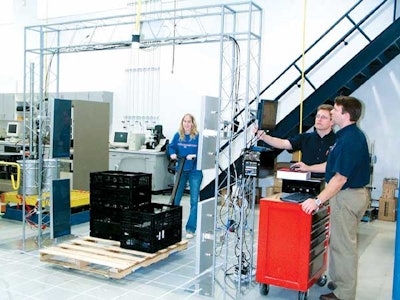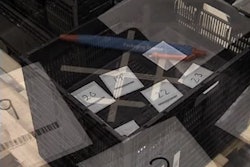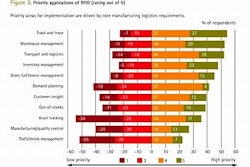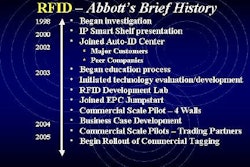
One of the most interesting of UF’s ongoing packaging research projects is an industrial radio-frequency portal in the packaging lab, deployed by UF’s Packaging Science program and newly created Research Center for Food Distribution and Retailing (RCFDR). It was engineered and installed through the donations of RFID systems integrator Franwell and the Sensormatic Division of Tyco Fire and Safety.
The initial RFID system comprises four independent readers from Matrics, software, and hardware (standard PC computer and monitor). It represents a $100ꯠ system, according to assistant professor Bruce Welt, Ph.D. The system’s software, popularly known as “middleware,” is GlobeRanger’s iMotionTM technology. In the two months since Packaging World’s spring visit, UF has added four more portals.
In one set of tests, RFID tags are placed in various positions inside plastic crates that are palletized and transported through the portal. It was interesting that the system was sensitive enough to read tags a number of feet before they entered the portal, with distances noted via a grid marked out on the floor. In other tests, students have used a marked pole to record the system’s sensitivity and accuracy in testing tags placed at various heights.


























